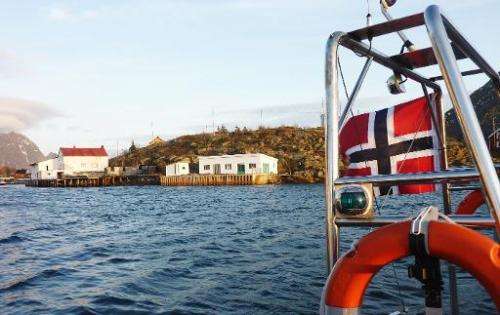Norway updates Arctic ice map in boost to oil exploration

Norway wants to redefine the contours of the Arctic ice edge, the government announced Tuesday in a controversial decision that would further open the Barents Sea to oil and gas exploration.
Within hours of the decision, the oil ministry offered companies 57 blocks, nearly all in the Barents Sea, some in the most northern waters ever opened for exploration.
A 2013 agreement between the minority government and its centre-right allies prohibits all activities in the rich and fragile ecosystem at the ice edge.
However global warming has seen the ice retreat further north fuelling debate on where its edge is now located.
"It's important to have updated knowledge on where the fragile areas are located," Norway's Minister of Climate and Environment Tine Sundtoft said in a statement.
"Therefore I've asked the Norwegian Polar Institute to update their calculations."
The new sea ice map is based on satellite data from between 1984 and 2013, replacing a current definition that uses material collected over two decades up to 1989.
This allows the government to argue that the new oil concessions are located far from the sea ice, whereas by the old definition a number of blocks would have been off limits.
When objections over drilling in the area erupted on the back of political disagreements late last year, the government decided to delay the licensing bid.
Norway's minority government will need to seek approval for the northward expansion from the parliament.
Members of two centre-right parties—whose support is necessary for a majority—said on Tuesday that they opposed the re-drawing of the boundaries, while environmental groups accused the government of pandering to the oil industry.
"We are not moving the borders of the ice edge," Prime Minister Erna Solberg told TV2 news. "It's nature which is moving the boundaries of the ice edge."
Oil companies faced with declining North Sea oil and gas reserves have pushed for new prospecting licenses in areas previously off-limits.
More than half of the blocks offered for exploration are located in the southeast of the Barents Sea, a region that has never been explored because of a long-lasting border disagreement with Russia that was finally settled in 2010.
Environmental groups have argued that the environmental risks of Arctic drilling would be too high and that it would probably not be viable in light of falling oil prices.
© 2015 AFP




















